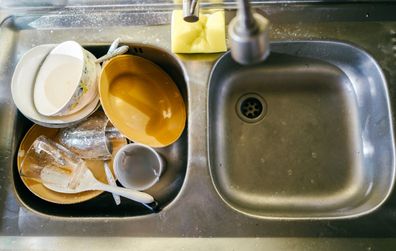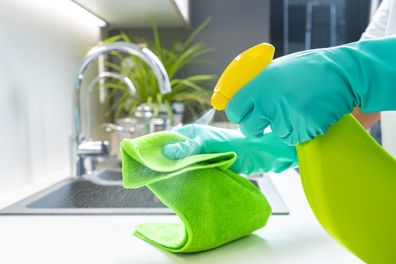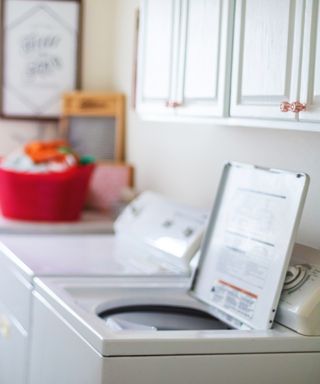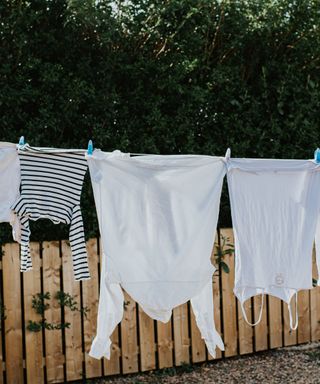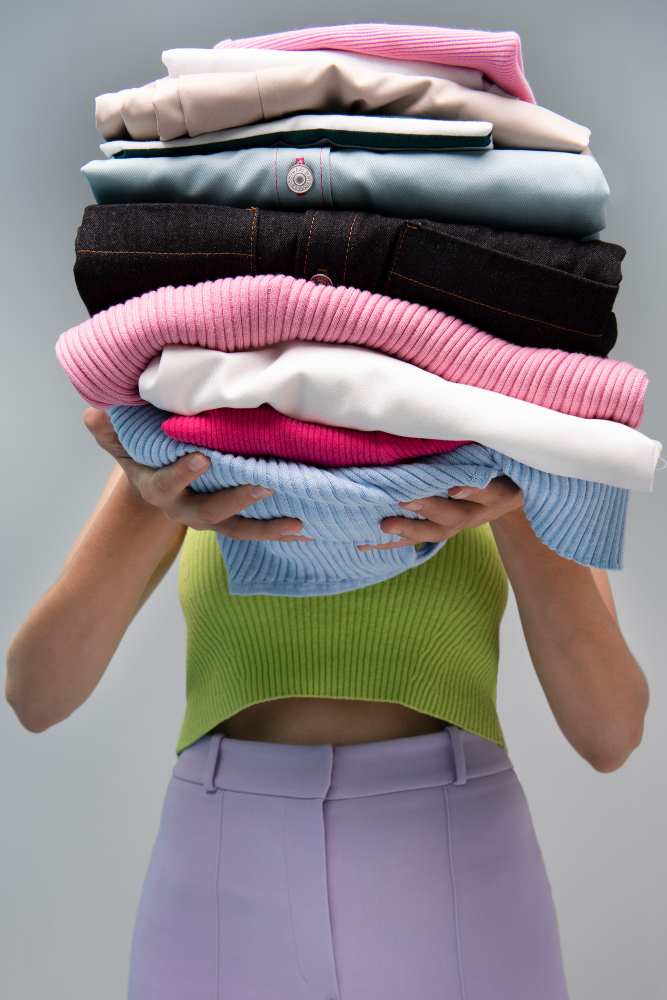Owning a cat comes with many different responsibilities. Did you know that part of keeping your cat's tree clean? Cats love to scratch and hide and make their beloved trees their pride and joy.
Over time they become old, damaged and sometimes smelly from use. Follow this complete guide to understand how to put an old scratching post through a cleaning and repair process that will ultimately give it a rejuvenated look.
Why is it important to clean a scratching post?
Cleaning a scratching post is essential for several reasons:
First, it helps prevent the spread of bacteria and parasites that may have accumulated on surfaces where your cat spends a lot of time. By cleaning the scratching post regularly, you can create a healthier environment for your feline friend and your cat family.
Additionally, regular cleaning can help reduce allergens in the home and make it more comfortable for all residents.
Finally, keeping your cat tree clean is important to maintain your cat's health and ensure they are happy and content in their safe place. When cleaning a scratching post, remove all toys, bedding, and other removable components.
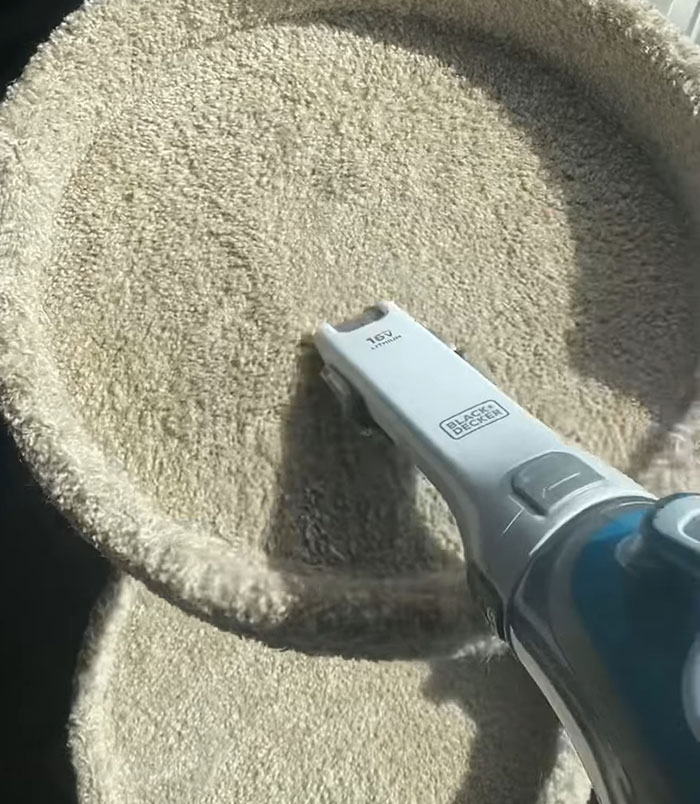
Photo credit: The Elderly Younger Cat.
Vacuum the entire scratching post to remove loose hair, dirt, and debris. Clean all scratching post surfaces with a pet-safe cleaner and a soft cloth. Pay particular attention to the areas where your cat likes to rest or scratch. Be sure to dry the scratching post thoroughly before reassembling it to prevent mold from forming.
What tools do you need to clean a cat scratching post and remove hair?
When cleaning a scratching post, there are a few essential tools that can make the task a lot easier. A vacuum cleaner is an essential tool for removing dirt, debris, and cat hair from the small corners of your cat tree.
In addition, a lint roller can effectively remove stubborn cat hair from the fabric and hard surfaces of the scratching post. You can use a soft-bristled brush or toothbrush to remove dirt and grime from the fabric and carpeted surfaces of the scratching post.
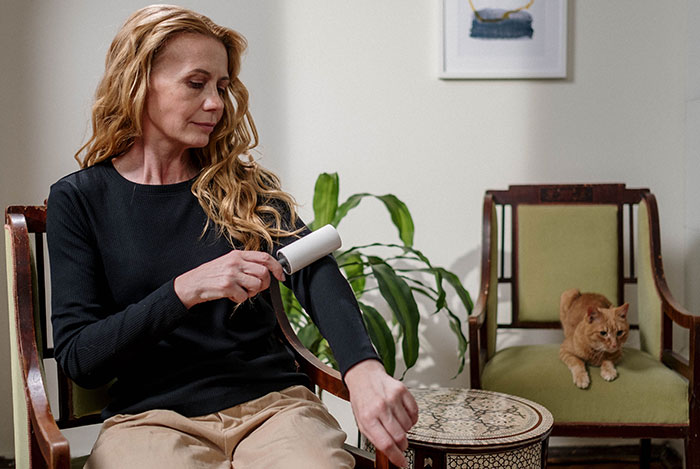
Photo credit: Cottonbro Studio.
Finally, you can scrub and disinfect the scratching post with a pet-safe cleaning solution or a mixture of water and vinegar to keep it clean and fresh for your cat. Be sure to check the manufacturer's instructions for specific cleaning recommendations for your cat tree.
Regular cleaning and care of your cat tree will help keep it looking and smelling great and provide your cat with a clean, safe place to play and relax.
What are the steps to steam cleaning a cat tree?
Steam cleaning a scratching post can provide thorough cleaning and disinfection. First, prepare the steam cleaner according to the manufacturer's instructions and make sure it is suitable for use on the scratching post.
Next, carefully steam clean the fabric and hard surfaces of the scratching post, paying attention to areas where your cat may spend a lot of time. After steam cleaning, allow the scratching post to air dry completely before letting your cat use it again. Here are the steps to steam cleaning a scratching post:
1.) Prepare the steam cleaner according to the manufacturer's instructions.
2.) If the cat tree has removable parts such as platforms or fabric-covered cushions, remove them and steam clean them separately.
3.) Thoroughly clean and disinfect all materials and hard surfaces of the scratching post with the steam cleaner.
4.) Pay special attention to areas where your cat likes to scratch or sleep, as more dirt and bacteria can accumulate there.
5.) Allow the scratching post to air dry completely before reassembling it or allowing your cat to use it again.
6.) Consider using a pet-safe disinfectant or deodorizer after steam cleaning to further disinfect and freshen the cat tree.
7.) Steam clean your cat tree regularly to keep it clean and prevent the buildup of dirt, bacteria and odors.
How to disinfect a scratching post and eliminate odors?
To effectively disinfect a cat tree and remove odors, it's important to use pet-safe cleaning products to ensure your cat's safety. Additionally, sprinkling baking soda on the fabric and letting it sit for a few minutes can help absorb odors.
A hydrogen peroxide solution can be used for complete disinfection. Here's how to make sure the scratching post is clean and disinfected before putting it back together for your cat to enjoy.
It is also important to vacuum and brush the scratching post regularly to remove accumulated hair and dirt. This prevents odors and keeps the scratching post clean for your pet.
Additionally, washing all removable fabric parts in the washing machine with a pet-safe detergent can help keep your cat tree fresh and odor-free.
In between thorough cleanings, spraying the scratching post with a pet-safe odor-neutralizing spray can help keep it smelling fresh. It's important to choose a pet-safe spray because cats can be sensitive to certain chemicals and fragrances.
Regular care and pet-safe cleaning products are essential to keeping your cat tree clean, disinfected and odor-free. This will help create a healthy and comfortable environment for your cat to play and relax.
How to re-cover a scratching post
Scratching is an important and healthy activity for cats. To protect your furniture from scratches, keep your cat occupied with trees and toys.
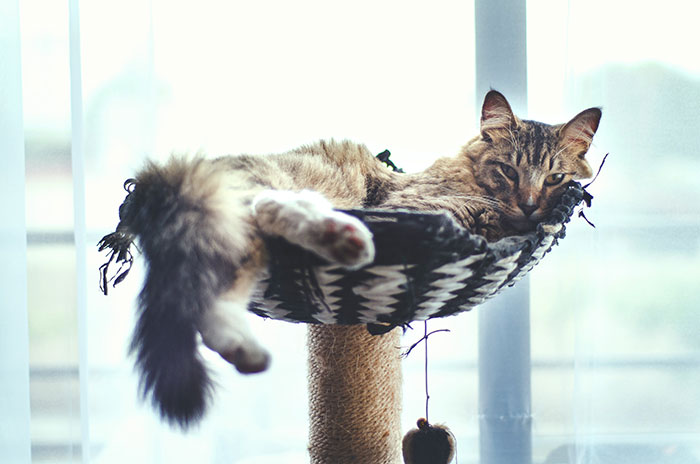
Photo credit: Té De Gatos
However, even the most durable sisal rope can wear out under heavy use. This is the best way to replace it and give new life to your cat tree.
Calculating the length of rope required can be difficult, especially if the original rope is already in poor condition. To make things easier, you can sew a tape measure around the perimeter of the post where you want to replace the sisal rope.
If you don't have a sewing tape measure, measure the length you need with a piece of string, then measure the string with a ruler or DIY tape measure. Finally, you can unroll some new sisal and wrap it around the old rope to mimic the length.
Once you know the circumference and height of the pole, it's time to trim it with scissors. When you cut the rope, wrap the end about 1 inch around itself and secure it with a rubber band to prevent it from unraveling as you work.
To remove the old rope, take out the scratching post as the old sisal rope can be dusty and release accumulated bacteria, dust and dander. It is best to place the tree on a flat surface to clean. Wear old clothes that you don't mind getting dusty, and wear a mask and goggles to make sure nothing gets into your nose or mouth.
Start by cutting off the most damaged part of the rope with a sharp blade. If you cut it into pieces, the rope can be easily removed at once or in multiple pieces. Working from top to bottom can minimize damage. If the rope sticks to the post, you may need to pull hard as this will cause more dust and pieces of sisal to fly around.
Using a staple remover or pliers, remove the safety staple at the top and bottom of the sisal rope where the ends attach to the post. You can even easily remove the staples with a flathead screwdriver. Staples can harm people and animals. Therefore, be sure to dispose of them as part of the cleanup work.
When attaching the new rope, it is easier to use the same shape and size as before. However, this will not bother your cat if you want to combine them. Using an oil-free sisal rope is the best course of action to protect your cat from additional toxins.
Begin the winding process by attaching the bottom end of the rope as close to the base as possible. Wrap the rope around the post as tightly as possible and use a rubber mallet to firmly tap each layer of rope together to ensure they are secure. If your springs are strong and secure, your new and improved scratching post will rival your cat's sharp claws.
It is recommended to use glue only when absolutely necessary, as its unpleasant smell scares cats away. The last thing you want is to go to a lot of trouble rearranging your cat's scratching post just so she can avoid it.
By making regular cleaning part of your cat tree care, you can ensure a healthier, happier environment for your cat and your family. In addition, a clean, well-maintained scratching post lasts longer and remains your cat's favorite place.
Adblock test (Why?)



